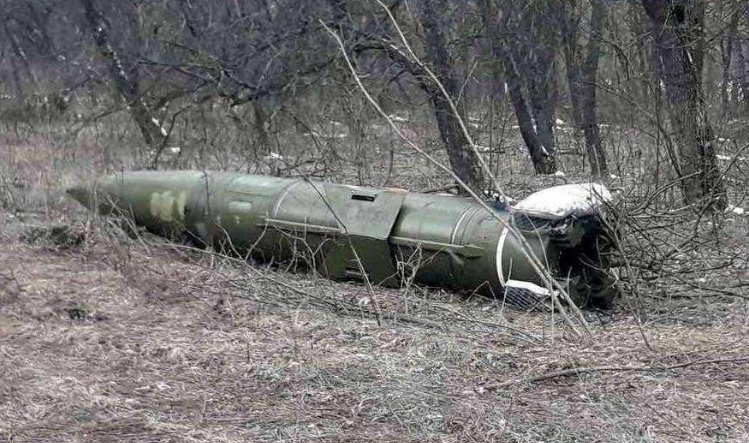The Russian Ministry of Defense announced on August 18 the deployment of three MiG-31 fighters armed with Kinzhal hypersonic missiles to Chkalovsk airfield in the Kaliningrad Region as part of additional strategic deterrence measures.
“MiG-31 with Kinzhal hypersonic missiles will be on round-the-clock combat duty at Chkalovsk airfield,” said the Russian Ministry of Defense (MoD) in the press release.
A video released by the Russian MoD showed fighters arriving at the base but not carrying the missiles, reportedly brought in separately.
The deployment comes amid soaring tensions in the Baltic region, with Finland and Sweden seeking NATO membership.
Three Russian MiG-31 Kinzhal missile carriers have been deployed to the Kaliningrad Oblast (Kaliningrad Chkalovsk air base), the Russian Defense Ministry announced on Thursday. pic.twitter.com/3WBHpYV3tz
— Status-6 (@Archer83Able) August 18, 2022
On the same day, Finland said that two Russian MiG-31 fighter jets are suspected of violating its airspace near Porvoo’s coastal city on the Gulf of Finland.
According to Kristian Vakkuri, the Finnish Defense Ministry’s communications chief, the aircraft were in the Finnish airspace for two minutes.
“The depth of the suspected violation into Finnish airspace was one kilometer,” Vakkuri said without elaborating on whether the fighter jets were escorted out.
NATO’s Growing Footprint In The Baltic
Finland and Sweden are seeking NATO membership following Russia’s invasion of Ukraine, which could add to Russia’s concerns, as the addition of these two countries to the NATO alliance would mean that all of the Baltic Sea’s littoral states except Russia will be NATO members.
At the moment, NATO has a 1,200-kilometre border with Russia, but Finland’s membership will add another 1,300 kilometers of the frontier for the Russian forces to defend.
Furthermore, Finland and Sweden would also provide NATO access to its ports and airbases, allowing the alliance to attack any Russian ships or aircraft in the Baltic from all directions in the event of a potential future conflict.

Therefore, Kaliningrad is relatively well placed for Russia to counter the growing presence of NATO in the Baltic region.
The Kremlin has been strengthening its military forces stationed in Kaliningrad by arming them with advanced weapons, including precision-guided Iskander missiles and an array of air defense systems, including the S-400 anti-missile systems.
“The events in Ukraine demonstrated that a clash with the collective West is a real possibility,” Russian Foreign Ministry spokesman Ivan Nechayev said on August 18, while emphasizing that a “confrontation with the US and NATO isn’t in our interests.”
It explains the increasing deployments of MiG-31 fighter jets to Kaliningrad in recent months, as a MiG-31 armed with a Kinzhal missile can strike most West European capitals like London, Paris, Rome, and many more, in a matter of 7-10 minutes, according to a previous EurAsian Times report.
MiG-31s Armed With Kinzhal Missile
The Kh-47 Kinzhal (“Dagger”) missile is said to have a range of 2000 kilometers. It can carry either a fragmentation warhead weighing approximately 499 kilograms or a 500-kiloton nuclear warhead, which is 33 times more potent than the atomic bomb that vaporized Hiroshima.
The missile can travel at 5-12 times the speed of sound and follows a flatter trajectory than a standard ballistic missile, leaving the air defenses with a short time to react. Also, the missile is difficult to intercept because of its ability to maneuver at all stages of its flight path.

The missile can hit not only stationary targets with precision but also mobile targets with the help of a radar seeker.
The Kh-47M2 Kinzhal made headlines this year after Russia announced on March 19 that it had destroyed a weapons storage depot in the village of Deliatyn in the Ivano-Frankivsk region in western Ukraine using its ‘Kinzhal’ hypersonic missiles, marking the first-ever use of a hypersonic weapon in combat.
US President Joe Biden, speaking about the missile at a conference with business leaders, said, “it’s almost impossible to stop it.”
Biden about "Kinzhal": this is an ordinary rocket, however, it cannot be stopped
A light bulb is the also a pear, but you can’t eat it!
Water is the same as gasoline, but you can’t refuel the car …
? pic.twitter.com/hOQqwNVLVL— Levi (@Levi_godman) March 22, 2022
The Kinzhal missile has to be employed using a high-altitude aircraft that can fly at high speeds. Therefore the MiG-31, a Mach 3-capable air defense interceptor, is perfectly suitable to carry the missile.
As per a previous EurAsian Times report, the Russian Air Force is known to have a total of 252 MiG-31s in its inventory, of which 10 to 20 aircraft have been upgraded to fire Kinzhals. Apart from that, the Kinzhal can also be fired from Tu-22M3 bombers.
- Contact the author at tanmaykadam700@gmail.com
- Follow EurAsian Times on Google News




